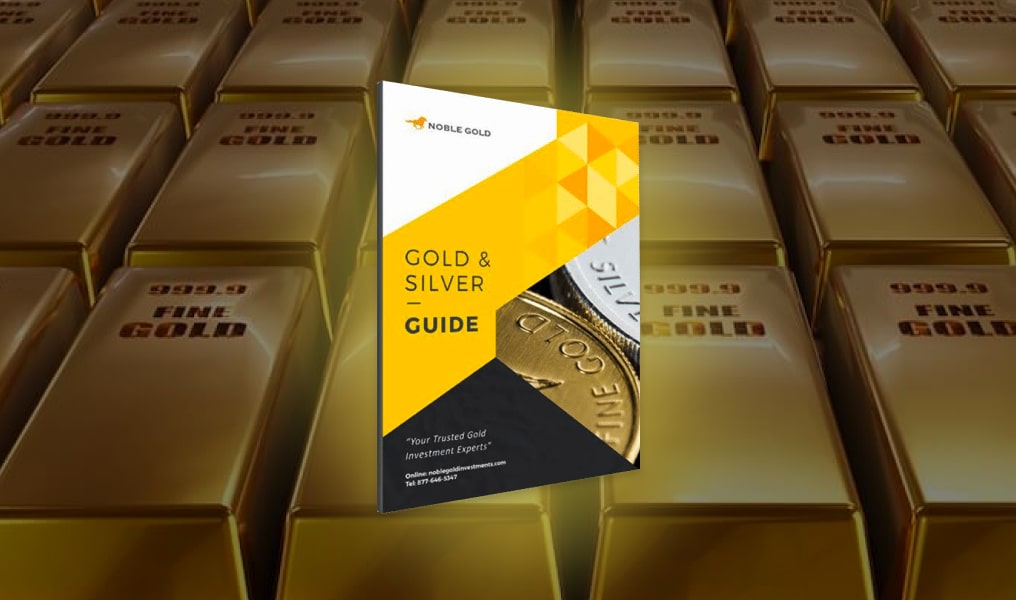Retirement planning is essential to financial security, yet many people in their 30s, 40s, and even 50s still have not started saving. Trying to catch up on retirement savings when you’re starting late can be intimidating, but it’s possible with the right strategies.
To help get your retirement rolling, we’ve put together some of the most common options you can take advantage of to build that retirement nest egg early. And if you’re closer to retirement age, don’t worry – we’ve got you covered on your options too.
The Importance Of Saving For Retirement
Nobody plans to spend their golden years bagging groceries or greeting customers at Wal-Mart, which is why saving for retirement is one of the most important financial decisions you can make. It’s never too late to start, but it’s always better to begin as early as possible. When you start saving early on, you have more time for your money to grow and compound, setting you up for financial freedom later.
The amount saved will depend on an individual’s income, goals, and lifestyle choices; however, many experts suggest setting aside 10-15% of your annual income. This percentage may increase depending on how close someone is to their desired retirement age and how much they want their nest egg value to be by then.
Common Retirement Investing Options
Before opening a retirement account, it’s essential to understand the various available options so you can make an informed decision about where to invest your money.
Individual Retirement Account (IRA)
One way to save for retirement is through an IRA (Individual Retirement Account). IRAs come in two forms: Traditional and Roth. A Traditional IRA allows you to contribute pre-tax dollars into an account which will grow tax-deferred until withdrawn at age 59 ½ or later. Contributions may also be deductible on your taxes, depending on your income level and other factors.
On the other hand, a Roth IRA allows you to contribute after-tax dollars into an account that grows tax-free until withdrawn at age 59 ½ or later. Contributions are not deductible on your taxes, but qualified distributions from a Roth IRA are not included in gross income.
Stocks or Mutual Funds
Some traditional investment vehicles for retirement are stocks or mutual funds invested through a brokerage account. Stocks offer the potential for higher returns over time but also come with greater risk than other investments, such as bonds or cash equivalents like certificates of deposit (CDs).
Mutual funds allow investors to diversify their portfolios by pooling money from multiple sources into one fund that invests in various assets, reducing overall risk while still providing growth potential.
Employer Offered 401(k) Plan
Another popular choice is contributing to a 401(k) plan offered by employers, which allows employees to contribute pre-tax dollars toward retirement savings on a tax-deferred basis until they withdraw it at retirement age. Employers may also match employee contributions up to certain limits, making this an attractive option for those looking to maximize their savings without having to pay taxes upfront on their earnings.
CDs and Bonds
For those who prefer more conservative investments, there are several options available, including CDs and bonds issued by governments or corporations, which provide fixed interest payments over time but do not offer much upside potential if markets rise significantly during the investment term.
Additionally, annuities provide guaranteed income streams after retirement based upon contributions made during working years; however, these typically have high fees, so it’s important to research all costs before committing any funds towards this type of product.
Precious Metals
Investing in precious metals such as gold has become increasingly popular among retirees due to its stability compared with other asset classes and its ability to preserve wealth against inflationary pressures over long periods.
Retirement Savings in Your 30s
Starting early gives individuals more flexibility when planning out their future finances due to their ability to generate larger returns over longer periods than shorter ones. Even small contributions made now can pay off big down the line.
For example, if someone invests $100 per month starting at age 30, then after 35 years at an 8% return rate, they would have accumulated nearly $200K versus only around $60K had the same individual waited until 40 years old before beginning the same plan.
Contribute To A 401(k) Or IRA
Contributing money to a 401(k) or IRA account can be one of the most effective ways to save for retirement in your 30s. These accounts offer tax advantages that can help you save money over time. You should also take advantage of any employer matching contributions available with these accounts, allowing you to maximize your savings potential further.
Set Up Automatic Transfers From Your Checking Account Into A Savings Account
Setting up automatic transfers from your checking account into a savings account is an easy way to ensure that you consistently save money each month without overthinking. This method allows you to set aside a certain amount of money each month and have it automatically transferred into a separate savings account, where it will accumulate interest over time and grow faster. Setting up automatic transfers to a savings account is an easy set-it-and-forget-it strategy.
Take Advantage Of Employer Matching Contributions
Many employers offer matching contributions when employees contribute towards their retirement plans, such as 401(k)s or IRAs, so make sure you take full advantage of this benefit if your employer offers it. Employer-matched contributions mean free money toward your retirement fund, so don’t throw it away.
Consider Investing In Precious Metals
Investing in precious metals like gold, silver, platinum, and palladium can provide an additional layer of security for those looking for long-term investments with less risk than stocks or bonds due to their tangible nature and historical stability over periods longer than ten years.
Gold has been used as currency since ancient times, making it an attractive option when diversifying investments outside traditional stock markets or currencies. Additionally, investing in precious metals offers tax advantages compared to other investment vehicles, such as mutual funds or ETFs.
Retirement Savings in Your 40s
Saving for retirement in your 40s can be a challenge. You may have more financial obligations, such as a mortgage or children’s college tuition, making it challenging to prioritize retirement savings. While providing for yourself and your family now is important, setting yourself up for a future without financial worry is also important.
Increase Contributions in Existing Retirement Plan
One of the best ways to catch up on retirement savings is by increasing contributions to an existing plan, like a 401(k) or 403(b). If your employer offers matching funds, take advantage of this and contribute at least enough money each month so that you receive the full match. This will help boost your savings quickly and efficiently.
Open a Roth IRA
Another option is opening a Roth IRA account if you don’t already have one. A Roth IRA allows after-tax dollars to grow tax-free over time. All qualified withdrawals are free from federal taxes when taken out during retirement (usually around 59 ½ years old).
The current maximum annual contribution limit is $6,000 yearly ($7,000 if 50+), but contributing any amount helps.
Invest in Stocks or Mutual Funds
Investing in stocks or mutual funds can also help increase your nest egg faster than traditional methods such as CDs or bonds alone due to their higher returns potential over time. However, investing comes with risk and should only be done with the money you won’t require for day-to-day expenses.
Make sure to research before investing in anything new and talk with an experienced financial advisor about which investments will work best for you based on your goals and risk tolerance level.
Retirement Savings in Your 50s
Those who find themselves nearing the end of their working career should focus on maximizing contribution limits allowed under the law since every dollar counts here, especially given the limited timeframe left to build upon existing assets before reaching the eligible withdrawal age. It’s never too late to start saving for retirement, and with the right strategies, you can make up lost ground in your 50s.
Contribute the Maximum Amount in IRA or 401(k)
The first step is to contribute the maximum amount allowed by law each year into an IRA or 401(k). If available through your employer’s plan, this can be done through automatic payroll deductions. If you are self-employed, consider setting up a solo 401(k), which allows higher contribution limits than traditional IRAs.
Invest in Index Funds
Another option is investing in index funds, which provide diversification across different market sectors with relatively low fees compared to actively managed mutual funds. Index funds also tend to have lower volatility than individual stocks and bonds, making them a great choice for long-term investments such as retirement savings.
Take Advantage of Company Offered “Catch-Up Contributions”
Finally, if you are over 50 years old and employed by a company that offers a 401(k), take advantage of “catch-up contributions.” Catch-up contributions are important for those who have fallen behind on their retirement savings goals.
They allow you to make additional contributions beyond the regular maximum contribution, which you must first meet, to your IRA or your organization’s plan (if applicable). The catch-up contribution limit is $6,500 in 2021 and 2022 for those aged 50 and over. This amount increases each year with inflation.
Diversify your Investment Portfolio with Precious Metals
Investing in precious metals such as gold, silver, platinum, and palladium can be a beneficial way to save for retirement. These metals offer protection from inflationary pressures and economic downturns while providing tax advantages when held within an IRA (Individual Retirement Account). Precious metals offer investors a hedge against market volatility while allowing them access to liquidity should they need it during their retirement years.
Investing In Precious Metals
Investing in precious metals like gold, silver, platinum, and palladium can be a great way to save for retirement. They are known for their stability and have been used as a store of value since ancient times. Precious metals tend to hold their value over time and provide protection against inflation or market downturns.
It’s never too late to start planning for retirement, even if you’re already in your 30s, 40s, or 50s. Investing regularly into a 401k plan through work is always beneficial, but adding some physical gold investments on top of that can help diversify your portfolio; this will protect it during economic downturns while still allowing it room for growth during good times too.
Physical Bars, Coins & Bullion
Investing in physical bars, coins and bullion is an easy way to get started with precious metal investing. You can buy these products from reputable dealers online or at coin shops around the country.
Physical bars come in various sizes ranging from 1 gram up to 400 ounces, while coins range from fractional sizes up to one ounce pieces. Bullion comes in bar form and coins but tends to be more expensive due to its higher purity levels than regular bars or coins.
IRA Accounts
For those looking for tax advantages when investing in precious metals, IRA accounts allow you to purchase gold, silver, platinum, and palladium within a retirement account without having any taxes applied until you withdraw the funds upon retirement age (59 ½). This allows investors to take advantage of long-term growth potential without worrying about short-term capital gains taxes eating away at their profits each year they’re invested into an IRA account.
Benefits of Precious Metals Investing
Investing in precious metals provides a hedge against inflationary pressures and unique tax benefits both in the short and long run. Taking advantage of the benefits precious metals investing offers can help you get on the right track for future financial success.
Tax Advantages Of Investing In Precious Metals
Investing in a precious metal IRA allows you to defer taxes until withdrawal age (59 ½) and avoid capital gains taxes on profits from investments held longer than one year. These tax benefits can help you reach your retirement goals faster than traditional investments alone. By deferring the taxes associated with investing in precious metals until the withdrawal age, investors can save more money for their retirement goals instead of paying those taxes upfront.
Certain coins minted by the US government are also eligible for exclusion under a rule whereby the first profits up to $6K per year aren’t taxed either way. This gives investors added incentive to invest wisely and select pieces carefully to maximize their profit potential without worrying about hefty taxation burdens afterward.
Precious Metals Hedge Against Inflation
Investing in physical gold or silver also protects against inflationary risks since the value of these assets tends to increase over time due to supply-demand dynamics and global economic conditions. This makes them attractive long-term investment options for people looking for reliable sources of income during retirement.
Diversifying your portfolio is another benefit associated with investing in a precious metal IRA. Diversifying your portfolio helps protect against market volatility by allowing you to spread out your risk across different asset classes, including stocks, bonds, and commodities like gold or silver bullion coins or bars.
Get Your Retirement Savings Caught Up With a Precious Metals IRA
Whether in your 30s, 40s, or 50s, it’s never too late to start saving for retirement. If you’re late to the game, investing in commodities such as gold and silver can be a great way to save for the future while taking advantage of the inflation-hedging power of precious metals.
If you’re interested in purchasing physical gold bars and coins in a self-directed IRA, call SpaceXgold today or click here to get started. Our team is standing by to answer any questions you may have and help onboard your account.






